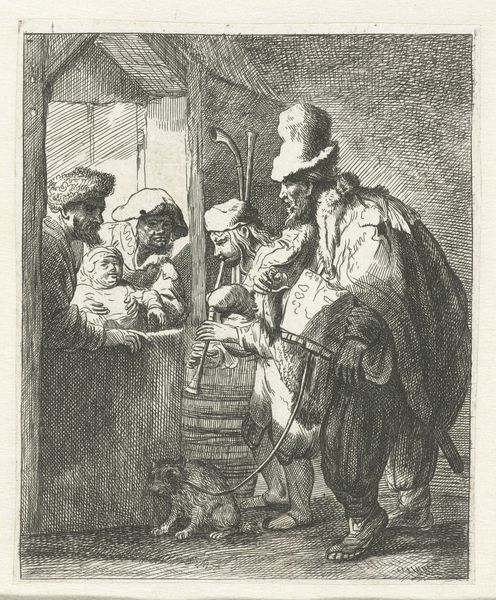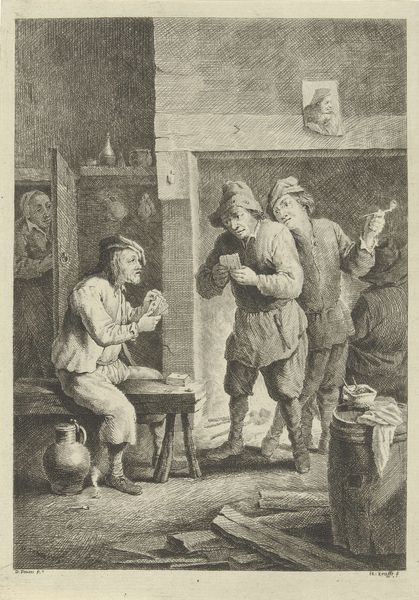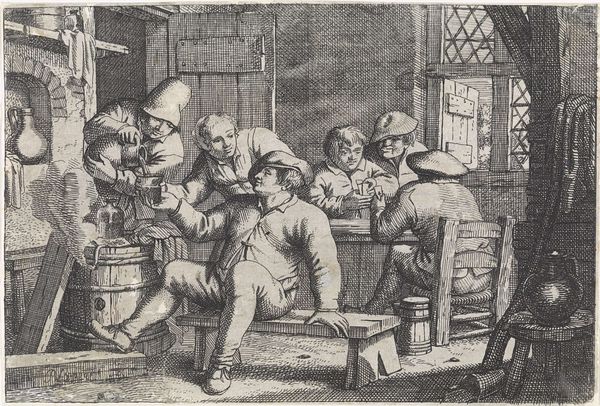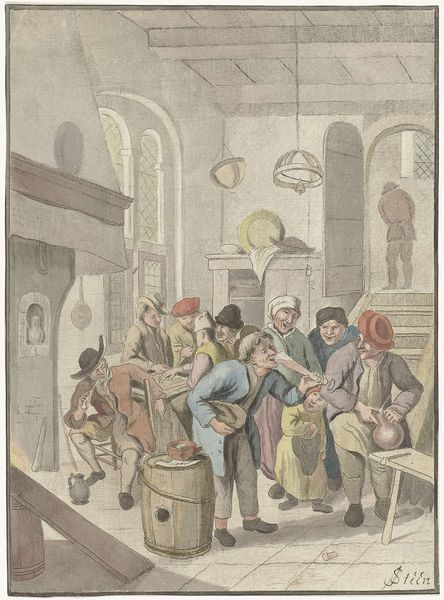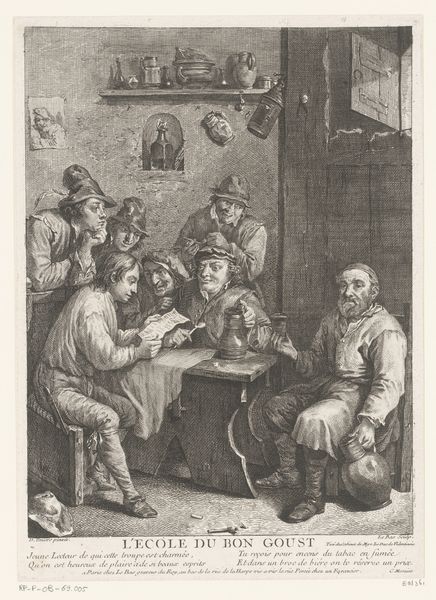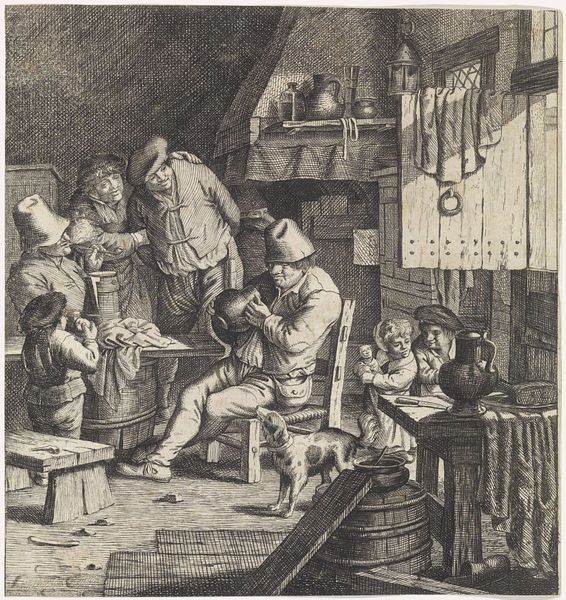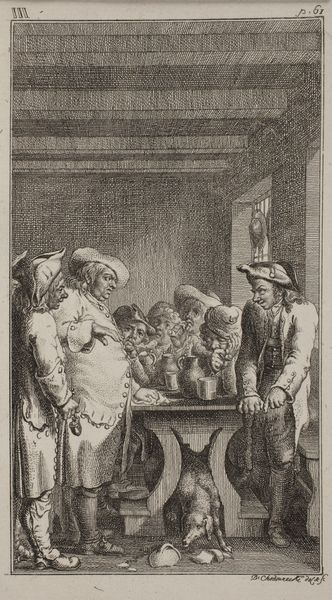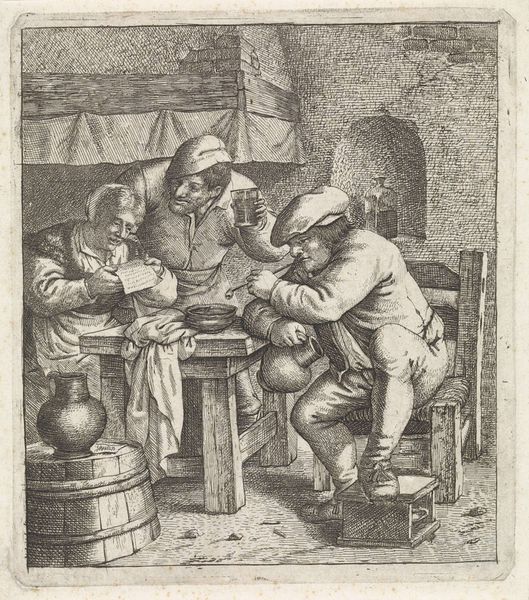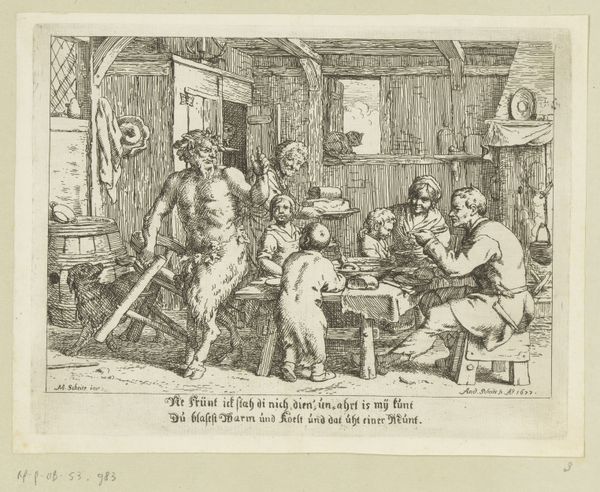
Frontispiece to Tobias Smollett's "Roderick Random" 1748
0:00
0:00
drawing, print, ink, engraving
#
drawing
#
baroque
# print
#
ink
#
men
#
genre-painting
#
engraving
Dimensions: Sheet: 5 5/16 × 3 1/16 in. (13.5 × 7.8 cm) Mount: 11 in. × 7 3/8 in. (28 × 18.8 cm)
Copyright: Public Domain
Curator: What a wonderfully intimate scene. We’re looking at the frontispiece to Tobias Smollett's "Roderick Random," created in 1748 by Charles Grignion, I. The medium is listed as drawing, print, ink, and engraving, currently held at the Metropolitan Museum of Art. Editor: It does have a sort of stage-lit quality. All the figures seem poised in their roles, under the bright light that almost theatricalizes this tavern scene. Look at the pensive chap perched upon the barrel. Curator: Exactly! This is genre painting at its finest; everyday life immortalized through art and literature. You see this tavern is not just a place, but a microcosm of society. Think of the literary culture surrounding publications such as this at the time. Coffee houses served as places to acquire books, pamphlets, debate clubs—all highly visible and communal experiences. Editor: A visual symphony of sorts! See how the hat becomes a symbolic crown of the nonchalant fellow, highlighting his state of repose. Then, next to him, two others engage, enacting some kind of a quarrel that involves much physical contact. Each character is very specific. Curator: Precisely, each figure is carefully placed, performing. Even the objects on the mantelpiece seem staged, contributing to the domestic atmosphere. Also consider, frontispieces served a crucial function. This work served not just as illustration, but as an advertisement and interpretive framework, setting audience expectations before they even engage with the narrative. Editor: I would add the mugs and pitchers amplify the spirit of conviviality and mirth! In fact, if you remove the brawling figures in the middle of the picture, the rest would be an invitation to sit and smoke tobacco while enjoying a nice drink! What an embodiment of 18th-century life, with all its excesses and familiar quarrels! Curator: And that tension, that interplay between social harmony and disruption, captures a real part of how the public received literature. Works were read, dissected, and fiercely debated. They served as catalysts. Editor: An artifact from when reading, quite simply, meant the engagement of public life. Curator: And I’m reminded again how vital visual imagery was in shaping, not just reflecting, the perception of books and public discourse.
Comments
No comments
Be the first to comment and join the conversation on the ultimate creative platform.
